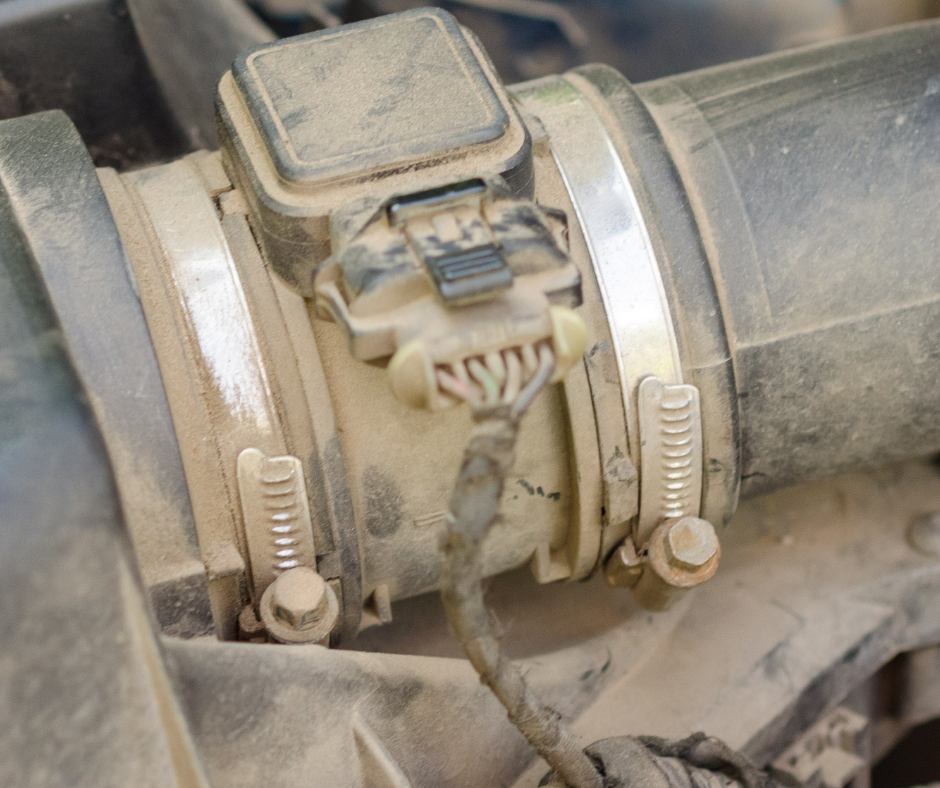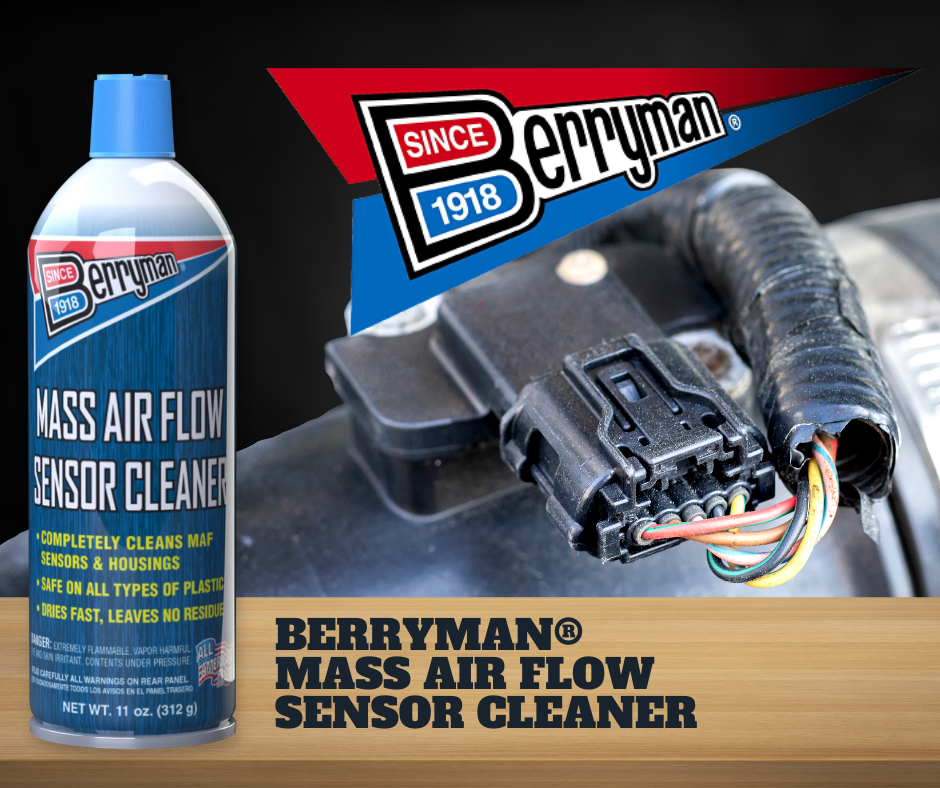Like most people, you probably don’t think about your vehicle’s mass air flow sensor very often. Maybe only when it stops working…
However, keeping this little device clean is important, as MAF sensors are critical to the proper operation of your vehicle’s fuel injection system.

What is a Mass Air Flow Sensor?
The mass air flow sensor is a device that measures the air mass flowing into the engine intake. You’ll see it installed between the intake manifold of the engine and the air filter; it is often considered the most critical component of an electronic fuel injection system!
By measuring both air density and temperature, your vehicle’s electronic control unit can then calculate how much fuel should be added to achieve the correct air-fuel ratio. This is all determined during the combustion process.
How Does it Work?
Immediately after analyzing the air flowing into the engine, the MAF sensor feeds that data analysis to the engine computer for efficient fuel consumption.
Most modern cars come equipped with an electronic control unit (ECU). This is the brain of your car, receiving and sending information about airflow and gas composition through its computers and processing fuel consumption rates for each driving mode or engine setting accordingly.
By adjusting air-fuel ratios (AFRs), the ECU coordinates all aspects — from accelerating to heating!
An engine’s AFR is a balance between the amount that’s burned and what isn’t, determining how much oxygen will reach your engine’s combustion chambers and helping to create power for vehicles with manual transmissions or Automated manuals.
ECUs optimize these ratios for different types of vehicles. Their job is to monitor, make adjustments, and optimize performance.
In a perfect world, all gasoline engines would run the ideal air-fuel mixture of 14.7 parts air to 1 part fuel. This target mixture, which is referred to as the stoichiometric air-fuel ratio, is a compromise between optimum fuel economy and optimum power output.
The analysis from your MAF sensor is used to achieve a good fuel ratio by preventing too much air from getting into the engine when there is little fuel.
Why Cleaning your MAF Sensor is Important
As you’ve probably already gathered, a bad MAF sensor doesn’t always allow for the correct fuel injection calculation, which may lead to larger issues with your vehicle. Drivability issues that impact power, starts, and acceleration are among the most common.
Here are five symptoms of a bad MAF sensor:
- 1. High-Speed Acceleration Troubles: If you are noticing issues* while speeding up to pass/merge, that might mean your ECU is limiting injection due to a faulty MAF sensor.
* This also includes hesitation, surging, or sudden abnormal power. - 2. Rough Idle: Without the proper amount of fuel, you can say goodbye to smooth idle.
- 3. Check Engine Light is Activated: In generating a reading that’s out of the programmed parameters specified by the manufacturer, your sensor can trigger a trouble code that’s displayed by the dash.
- 4. Poor Fuel Economy: Errs can mean more fuel (than necessary) is being used.
- 5. No-Engine Starts or Hard Starting: If the MAF sensor signal is skewed, the computer may not be commanding enough fuel injection to start the engine right away.
Just as with any other car part, these sensors can degrade over time. If your vehicle is experiencing any of the above issues, y’all may be experiencing symptoms of dust and oil contamination.
How do you Quickly and Safely Clean Dirty MAF Sensors?
Shake out the dust. Blow out the intake tubing and install a new air filter to prevent future dust intrusion. Then use a MAF-sensor-specific cleaner to take care of any contamination.
Our Berryman® Mass Air Flow Sensor Cleaner is specially formulated to safely remove dust and oil deposits from sensitive sensor elements without damaging them or leaving harmful residues. Top formula benefits:
→ Fast-drying for maximum compatibility with all plastic housings and sensitive platinum sensors.
→ Designed to dry quickly without any left-behind residue.
→ VOC compliant in all 50 states.
Clean and functioning MAF sensors allow ECUs to operate accordingly for smoother acceleration, greater power, and increased fuel economy. So make certain that your engine gets the right amount of air!
You can also check out this video guide on Facebook for step-by-step information on how to use Part #2211.
Or to clean all major air-intake and fuel system components, see our 4-Step Professional Air & Fuel System Maintenance Kit.

